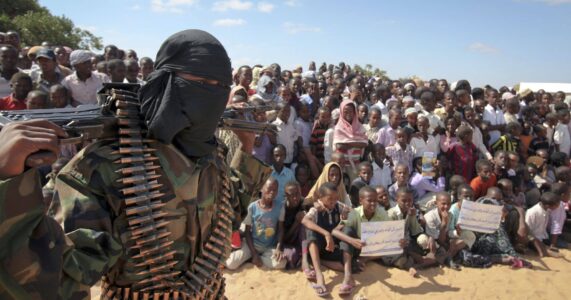
Africa is home to some of the world’s worst terrorism hotspots
Sub-Saharan Africa is now home to some of the world’s worst terrorism hotspots, according to a new index released today.
Seven African countries are among the top 10 nations facing the greatest terrorism threat, according to a ranking of 198 countries released by Verisk Maplecroft, a global risk consultancy, making the continent the worst performing region globally.
With the index’s worst possible score of 0 out of 10, Burkina Faso, Mali and Somalia rank alongside Syria and Afghanistan for the highest risk.
Cameroon, Mozambique, Niger and the Democratic Republic of Congo, all facing sustained violence from various jihadist groups allied to Al Qaeda or Islamic State, also rank among the worst affected countries in the world.
Jihadism in Africa is not new but since rebels and allied jihadists invaded northern Mali in 2012, the security situation has worsened and groups have spread across porous borders, overwhelming local forces.
In west Africa, the situation is particularly bad. An array of jihadist groups such as Boko Haram, Jama’a Nusrat ul-Islam wa al-Muslimin (JNIM) and Islamic State in the Greater Sahara (ISGS), wreak havoc over vast stretches of land.
In the Central Sahelian nations of Burkina Faso, Mali and Niger, jihadists from the Al-Qaeda-allied JNIM and ISGS have played ethnic groups off against each other, creating a cycle of deadly tit for tat communal attacks.
Around the Lake Chad Basin, Boko Haram and its offshoot Islamic State West Africa Province (ISWAP), have been conducting one of the most egregious campaigns of violence against civilians on earth for more than a decade.
More recently, a secretive militant force has sprung up in northern Mozambique named Ahlu-Sunnah Wa-Jama (ASWJ), claiming some allegiance to Islamic State in the Middle East.
While many of these groups have some form of allegiance to terrorist groups in the Middle East, many analysts maintain that jihadism in Africa is a local affair.
“Groups operating in sub-Saharan Africa are mostly driven by local, national, and at times regional factors. The instrumentalisation of a range of grievances such as a lack of public services, in-effective, absent or corrupt government authority or a sentiment of exclusion by certain segments of the population are at the main driving forces behind these groups,” said Alexandre Raymakers, an analyst at Verisk Maplecroft.
“Ahlu-Sunnah Wa-Jama (ASWJ) in northern Mozambique is the group that has grown the most in terms of lethality and overall capability in the last year.”
“The increasing tempo of attacks clearly indicate that ASWJ has developed a centralised command structure able to coordinate several complex operations simultaneously, often overwhelming government forces,” Mr Raymakers added.
Al Shabaab in Somalia is perhaps the most dangerous group in Africa. It controls vast stretches of territory and multi-million dollar black market businesses.
The group regularly inflicts catastrophic attacks on the Somali military and is responsible for the deaths of thousands of civilians.
Last week, President Trump ordered the US military to withdraw all US military personnel from Somalia. Observers say this could seriously undermine Somalia’s stability and efforts to contain Al Shabaab’s attacks.
Source: Telegraph





